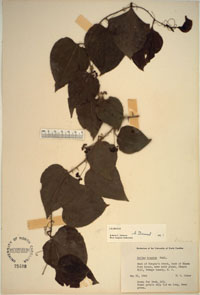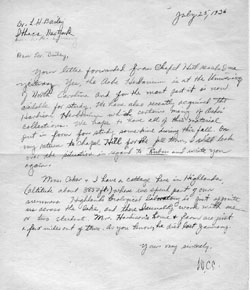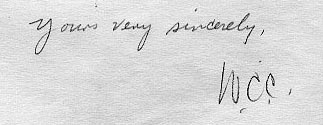William Chambers
Coker
(1872-1953)
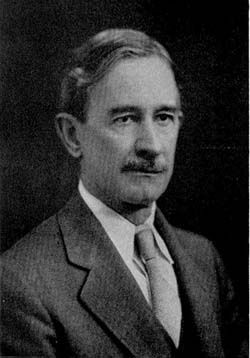 |
The botanist who gave his name to the botany building, the
arboretum, and the now-almost-destroyed bit of woods between the botany
building and the bell tower was born in Hartsville, South Carolina on
October 24, 1872. His father was Major James Lide Coker, an educational
reformer who helped to found the South Carolina public school system and
the Coker College for Women in Hartsville. His mother was Susan Armstrong
Stout.
Coker received his undergraduate education at the University of
South Carolina and his Ph.D. from Johns Hopkins University, working as the
first student of Duncan S. Johnson, in 1901. In 1902 he came to the
University of North Carolina at Chapel Hill as an associate professor.
By 1908 he was a full professor and chairman of the newly established
Botany Department, located in Davie Hall (now home to the Psychology
Department). He had also begun the planting of the Coker Arboretum. |
Coker's research interests were far-ranging. His Ph.D.
research concerned the embryogeny of Taxodium (bald cypress). He
continued this type of work for a short time, investigating embryogeny and
seed-formation in the gymnospermous genera Podocarpus and
Cephalotaxus. He was also interested in the woody flora of the
Southeast, not only in an academic sense, but also for purposes of
landscape design. Other topics of inquiry included bryophytes, filmy
ferns, the teaching of science, and the biography of Southeastern
botanist.
But Coker's first love was mycology, and the bulk of his
publications (137 in his fifty-one year career at UNC!) are devoted to the
fungi. His most noted achievement is probably his research on the
Saprolegniaceae, a group of water molds. This group was also the subject
of one of Coker's few independent books. | 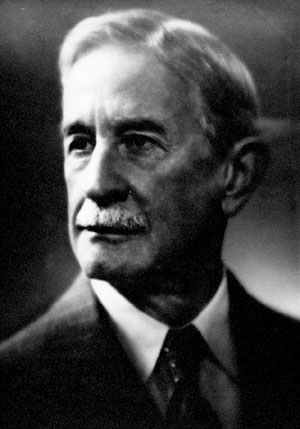 |

Pinus
glauca (Walter's pine);
one of the oldest trees in the Coker
Arboretum. | Besides his scientific research, Coker also
continued his father's interest in education, founding the Bureau of
Design and Improvement of School Grounds. This group was especially
concerned with the beautification of school grounds through planting.
UNC's campus benefited tremendously from Coker's landscaping skills as he
served for thirty years on the Building and Grounds committee.
Finally, Coker was known for his love of teaching. He was known
for a spontaneous teaching style with an emphasis on field trips and
abundant fresh material for students to examine. In a paper published
just after Coker's death (June 27, 1953), his students John N. Couch and Velma D. Matthews wrote that "to a
remarkable degree, he had the rare ability to stimulate the student to
want to find out more for himself and to believe in the importance of what
he was doing, if it added to knowledge." Coker had also been known to
financially assist needy graduate students and to contribute from his own
pocket to the collections of the UNC Botany Library (later named after his
student, John Couch). The current strength of both this library and the herbarium owes
much to Coker's labors. |
Reliquiae
Cokeriana
Below are a specimen of Smilax
hispida Muhl. collected by Coker and two specimens of his handwriting.
The specimens may be clicked upon to obtain larger images. The writing samples represent a letter to L. H.
Bailey at Cornell, written in Coker's more legible hand and notes taken
from Theophrastus' Enquiry into Plants.
The manuscript materials
on this page are from the archives of the Herbarium at the University of
North Carolina at Chapel Hill and are used with permission. Further
materials are located in the Coker
papers in the Southern
Historical Collection, Manuscript Department, Wilson Library, and in
the papers of
the UNC Botany Department.
Bibliographica
Cokeriana
Coker's writings are
extremely numerous, consisting largely of papers printed in the Journal
of the Elisha Mitchell Scientific Society and Mycologia.
These writings are listed in Couch and Matthews' article in
Mycologia vol. 46, pp. 372-383. A few of Coker's seminal works are
listed below.
Coker, William Chambers. 1923. The
Saprolegniaceae, with notes on other water molds. Chapel Hill:
University of North Carolina Press.
Coker, William Chambers. 1923. Clavarias of the United States and Canada. Chapel Hill:
University of North Carolina Press.
Coker, William Chambers & Henry
Roland Totten. 1934. Trees of the southeastern states, including
Virginia, North Carolina, South Carolina, Georgia, and Northern
Florida. Chapel Hill: University of North Carolina
Press.
Coker, William Chambers & Alma Holland
Beers. 1951. The stipitate hydnums of the eastern United
States. Chapel Hill: University of North Carolina Press.
This page was
constructed by Ron Gilmour with the assistance of Mr. Bill Burk,
Mrs. Mary Felton, Dr. Jim Massey, and Mr. Jim Murphy. Additional
information and corrections are welcome. Please email Ron Gilmour
at gilmr@csc.albany.edu.



